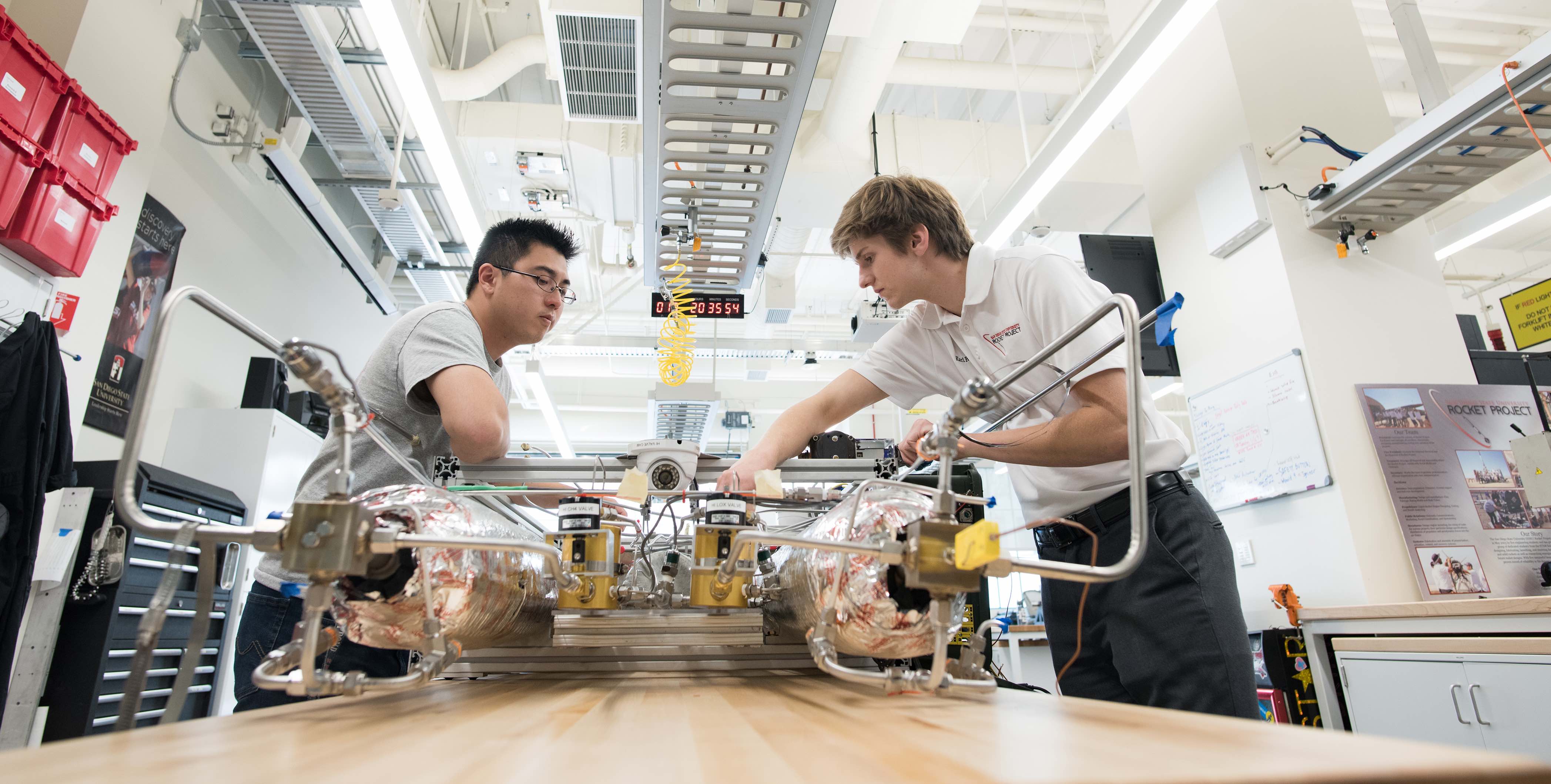2014 Design Day
2014 Design Day Slideshow
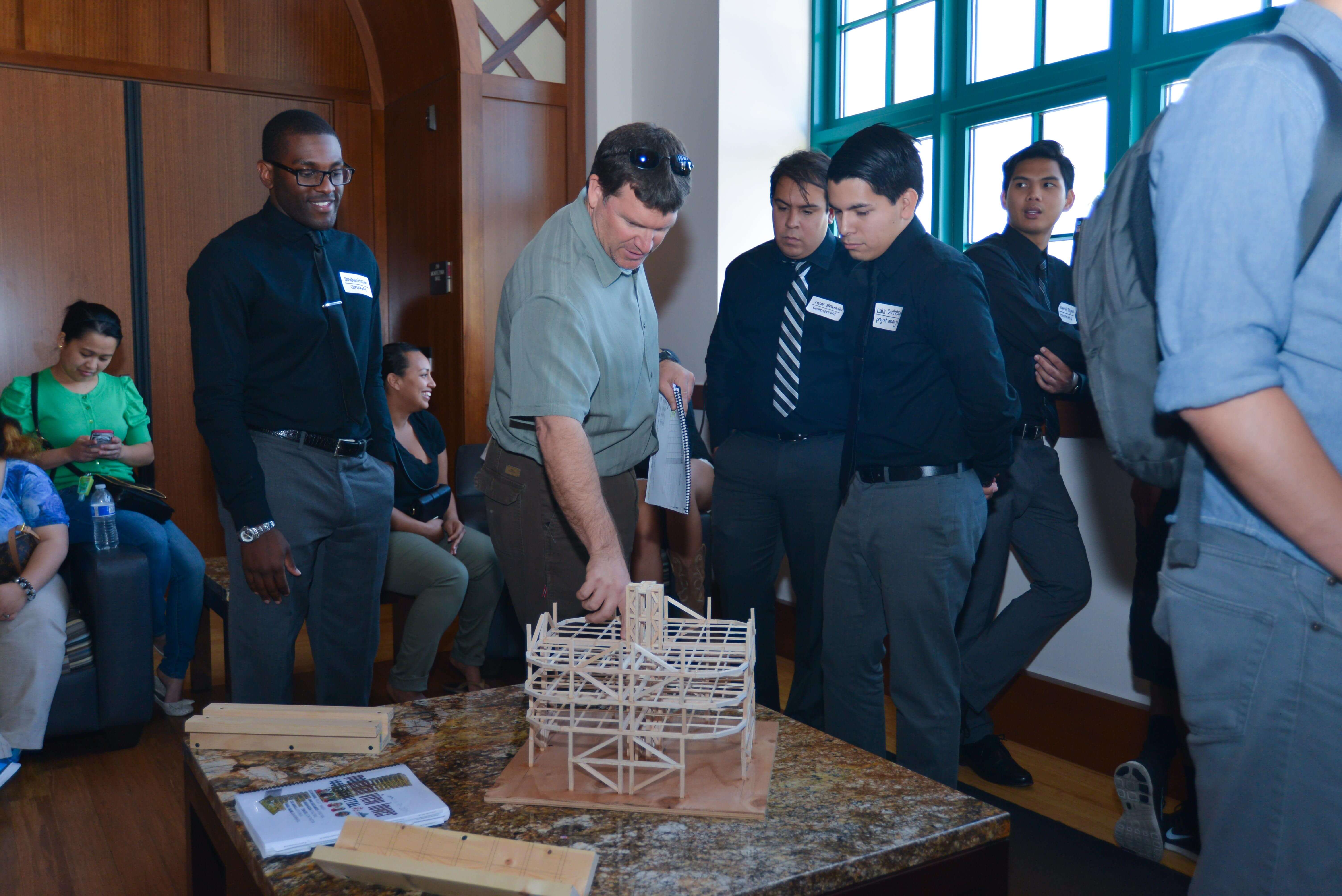
Mountain View Tower Project: SDSU Engineering students compete in the Undergraduate Seismic Design Competition held at the EERI Annual Meeting, where they design a building according to a problem statement and verify the seismic load resistance. They are required to build a scaled balsa wood model representative of the real building design and expose it to three ground motion test simulating difference earthquakes.
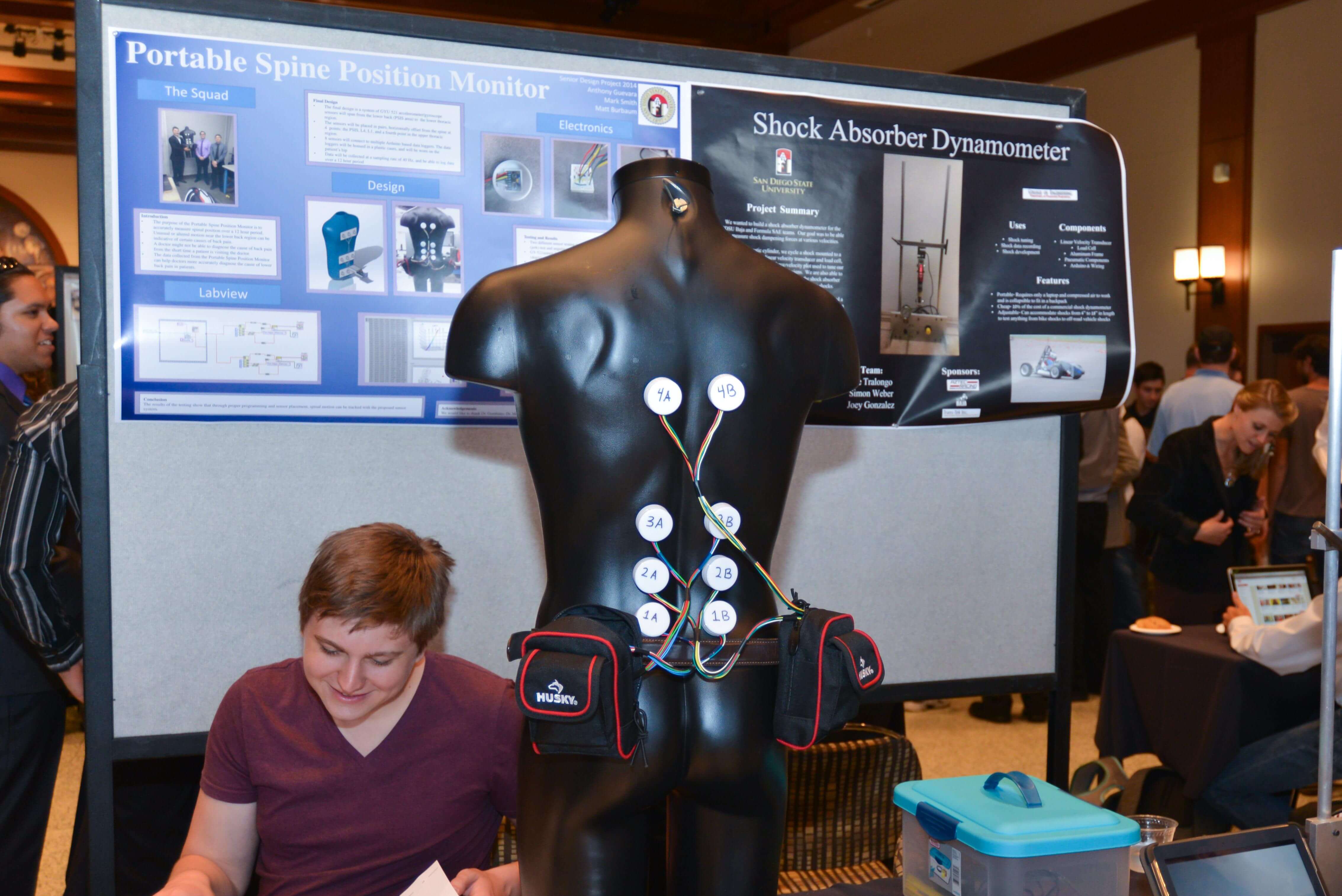
Portable Spinal Position Monitor: The purpose of the Portable Spine Position Monitor is to accurately measure spinal position over a 12 hour period. The data collected from the Portable Spine Position Monitor can help doctors more accurately diagnose the cause of lower back pain in patients.
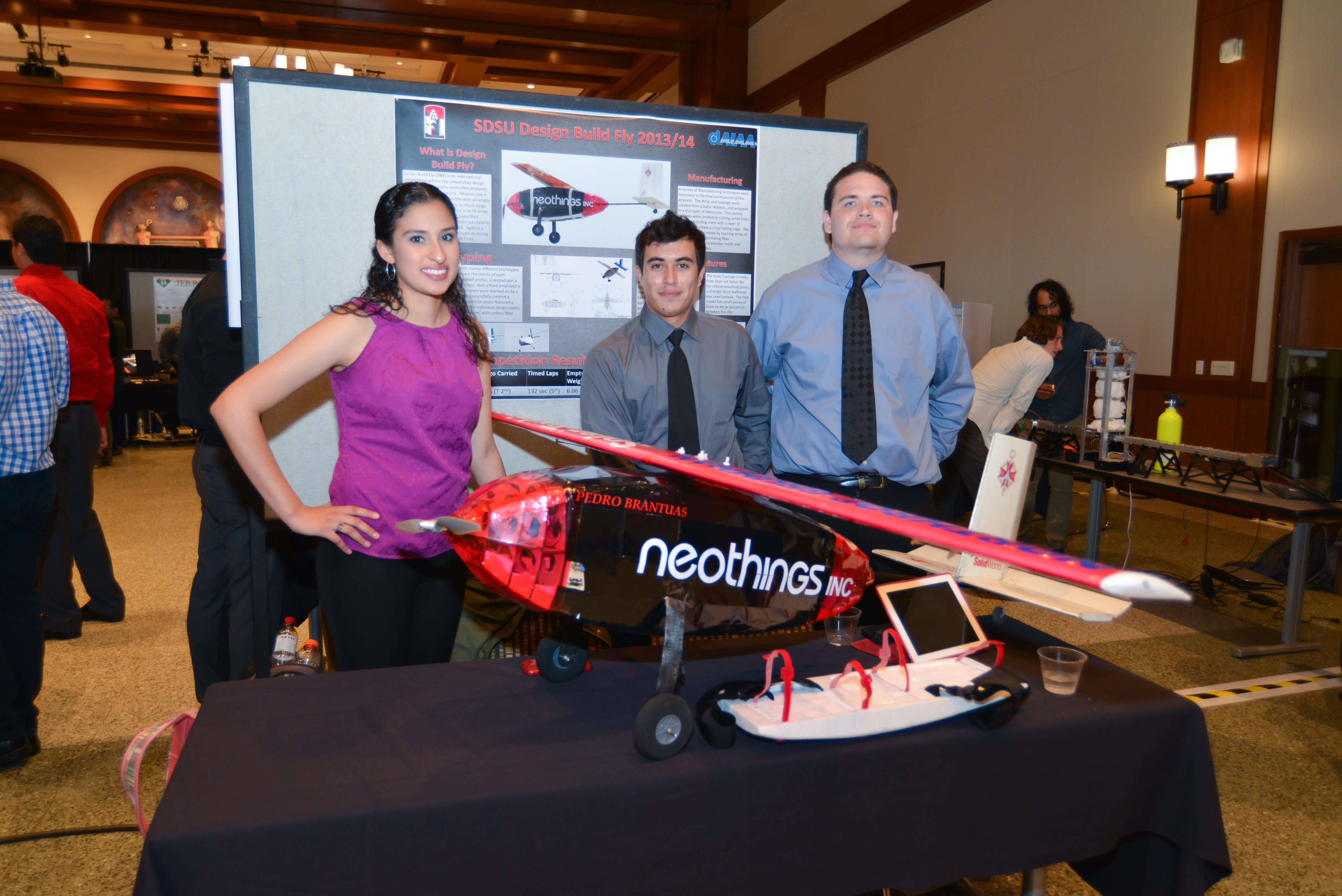
The Design Build Fly competition is a contest where teams from around the world design and manufacture radio control aircraft. The planes are judged on speed, weight, and carrying capacity. This year SDSU placed 8th.
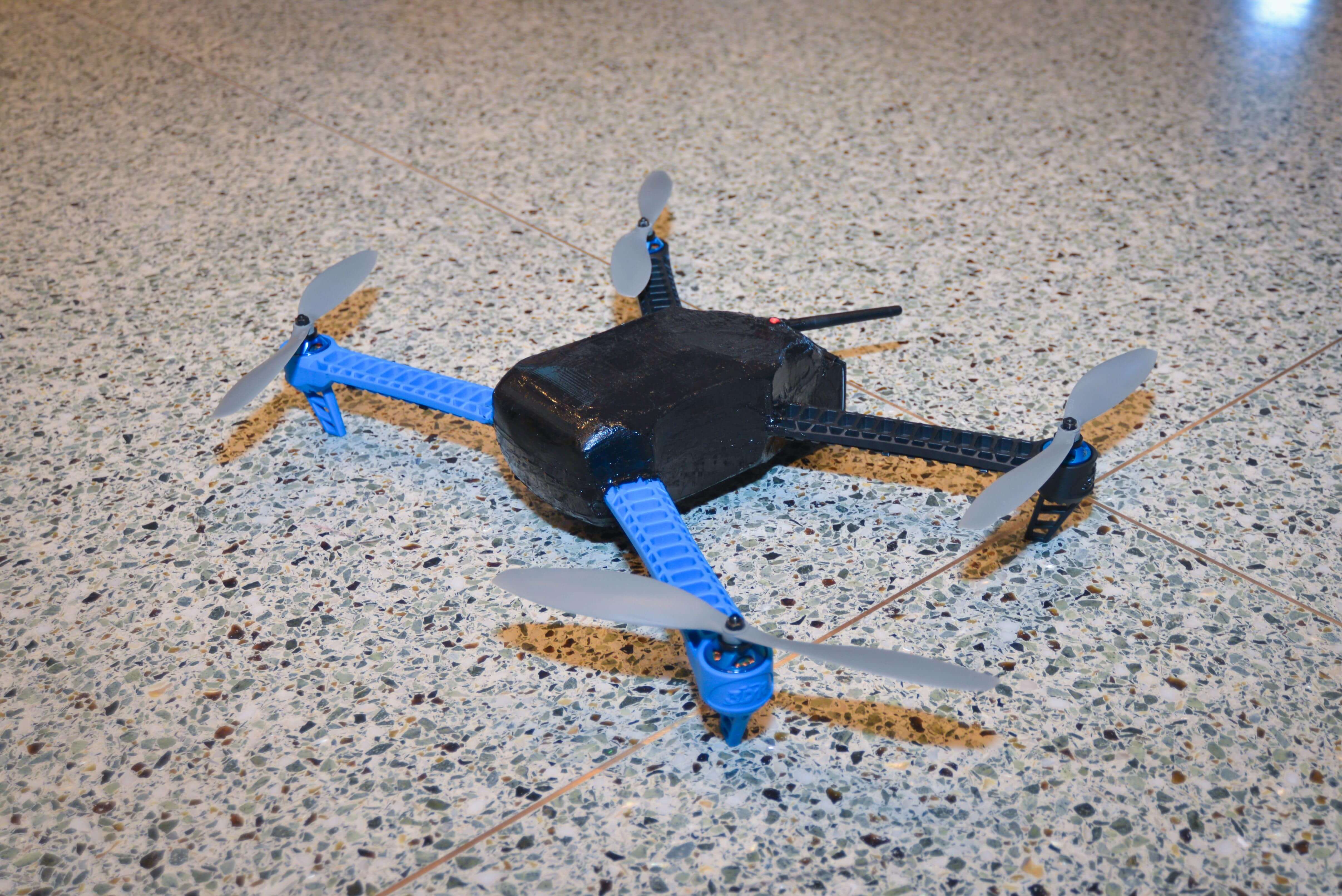
Iris AQ: Fully autonomous quadcopter capable of multi-waypoint missions, and landing/ takeoff on solid ground or water.
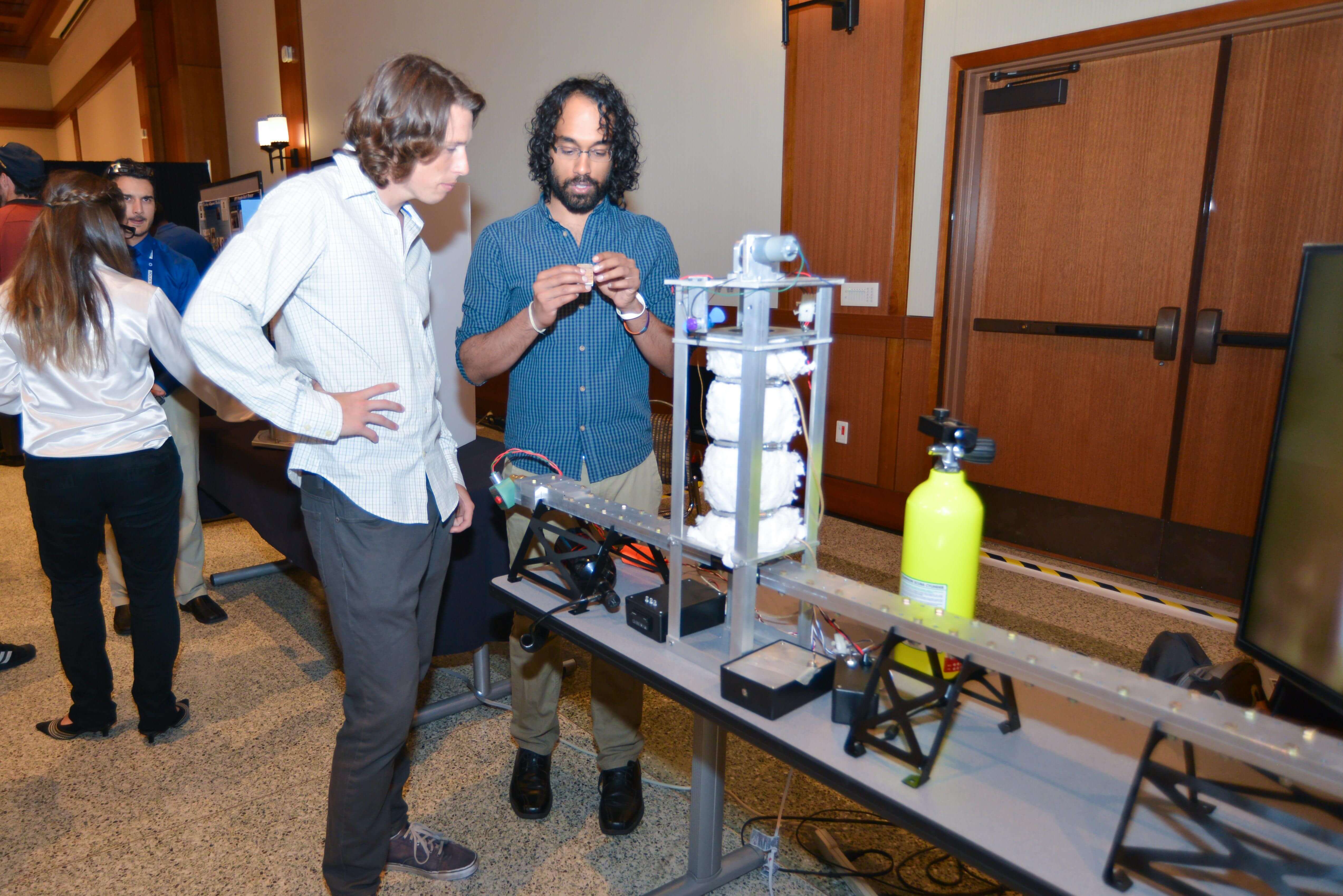
Ultra-Rapid Manufacturing of Nano Scaled Components: It was hypothesized, that a projectile moving through a molten metal film would pick up a thin coating of the metal. Should this coating be separated from the projectile, a thin walled component would be produced. To test this hypothesis, a preliminary, proof of concept experiment was designed and conducted.
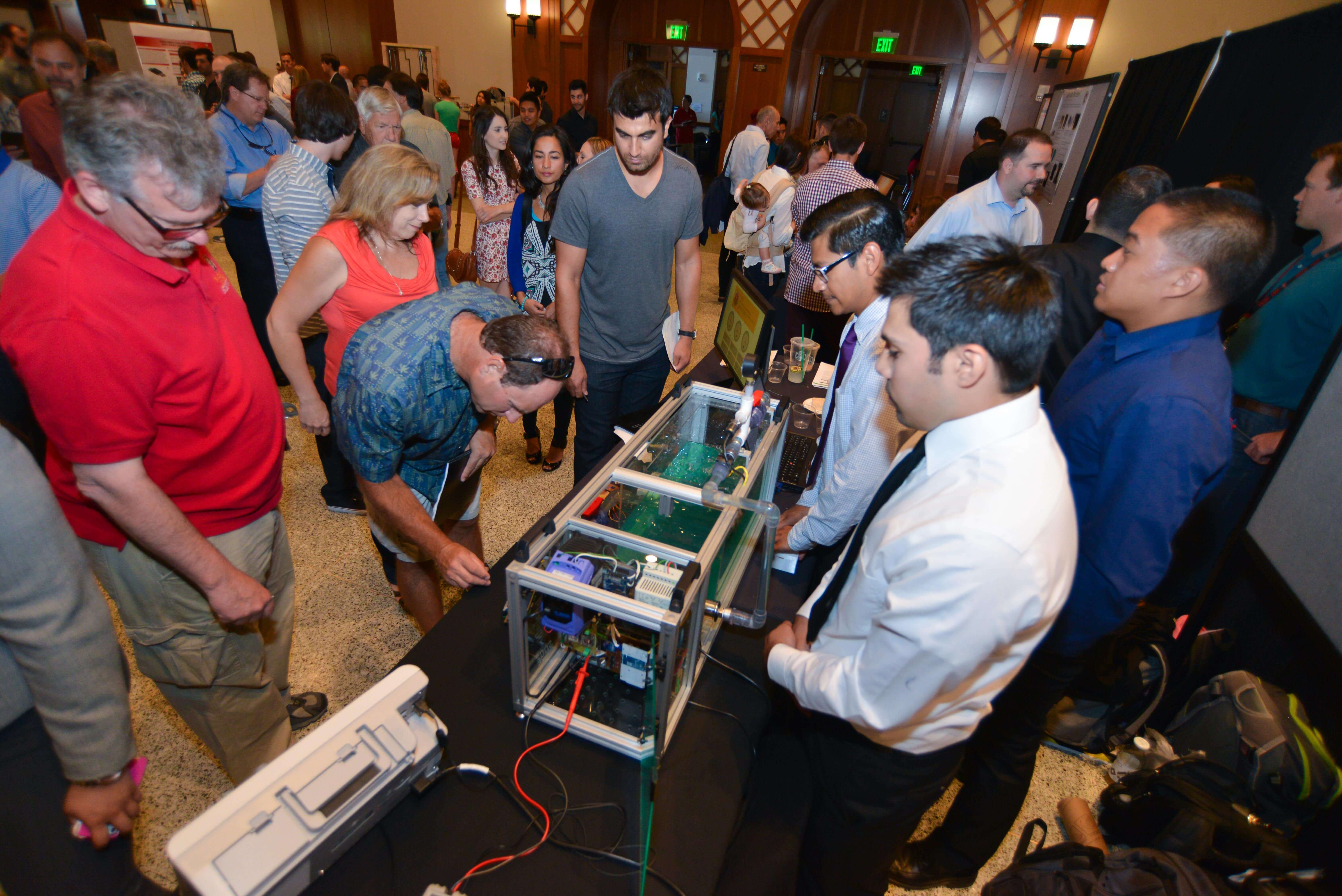
V.I.C.E. (Hardware and Software Team): To prove the Variable Frequency Drives save consumers money, we created a 10 gallon tank with a water pump to imitate a pool. Our system will monitor the frequency the motor is running at, the flow rate the pump is creating, the pressure of the water flowing in to the tank, and power usage.
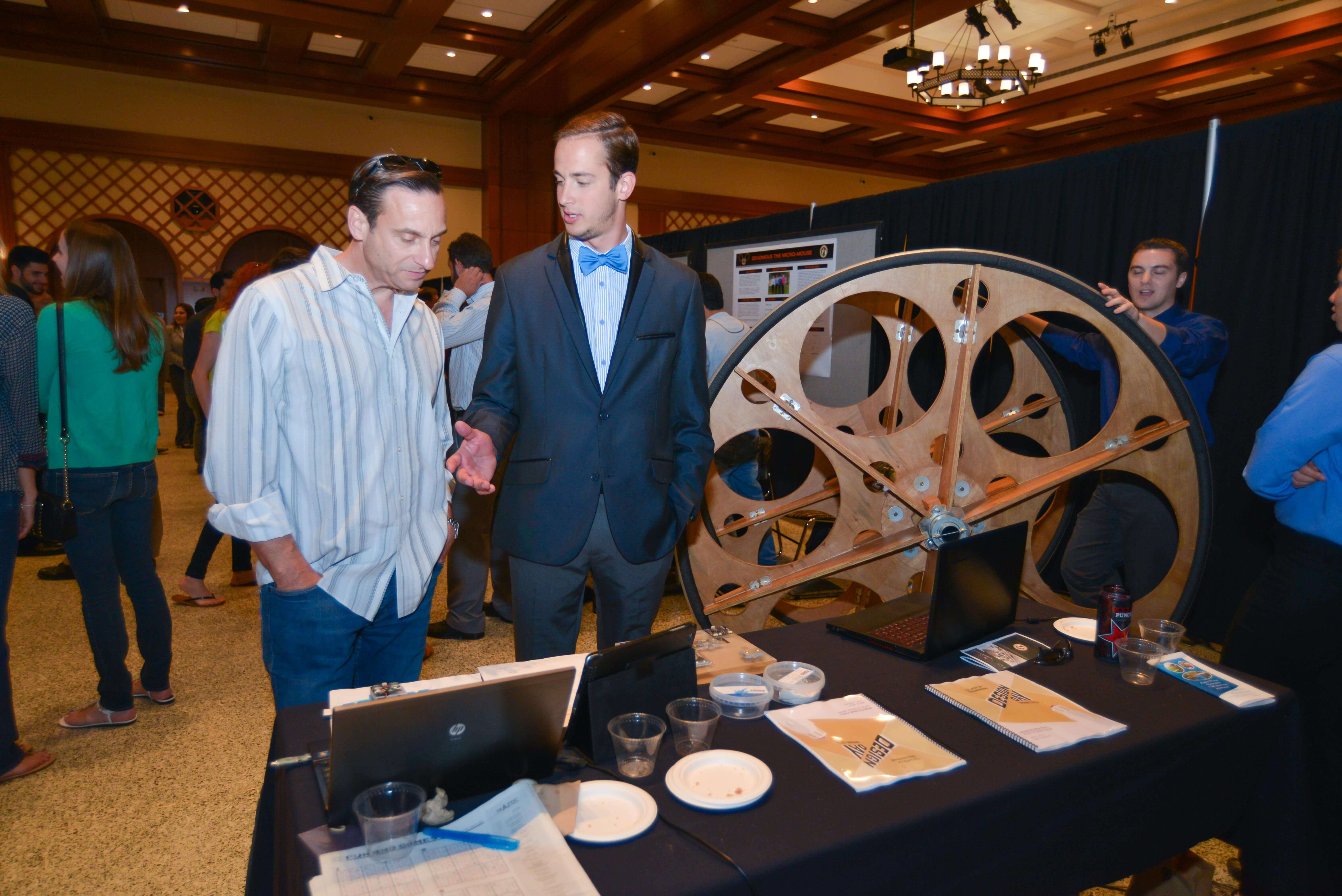
Running Support Device: The goal of this project is to design a support superstructure to allow users with a diminished sense of balance, lower extremity disabilities, or similar challenges, to walk or run. The device’s capabilities include supporting a user up to their full body weight so that it can be used for rehabilitation and recreational purposes.
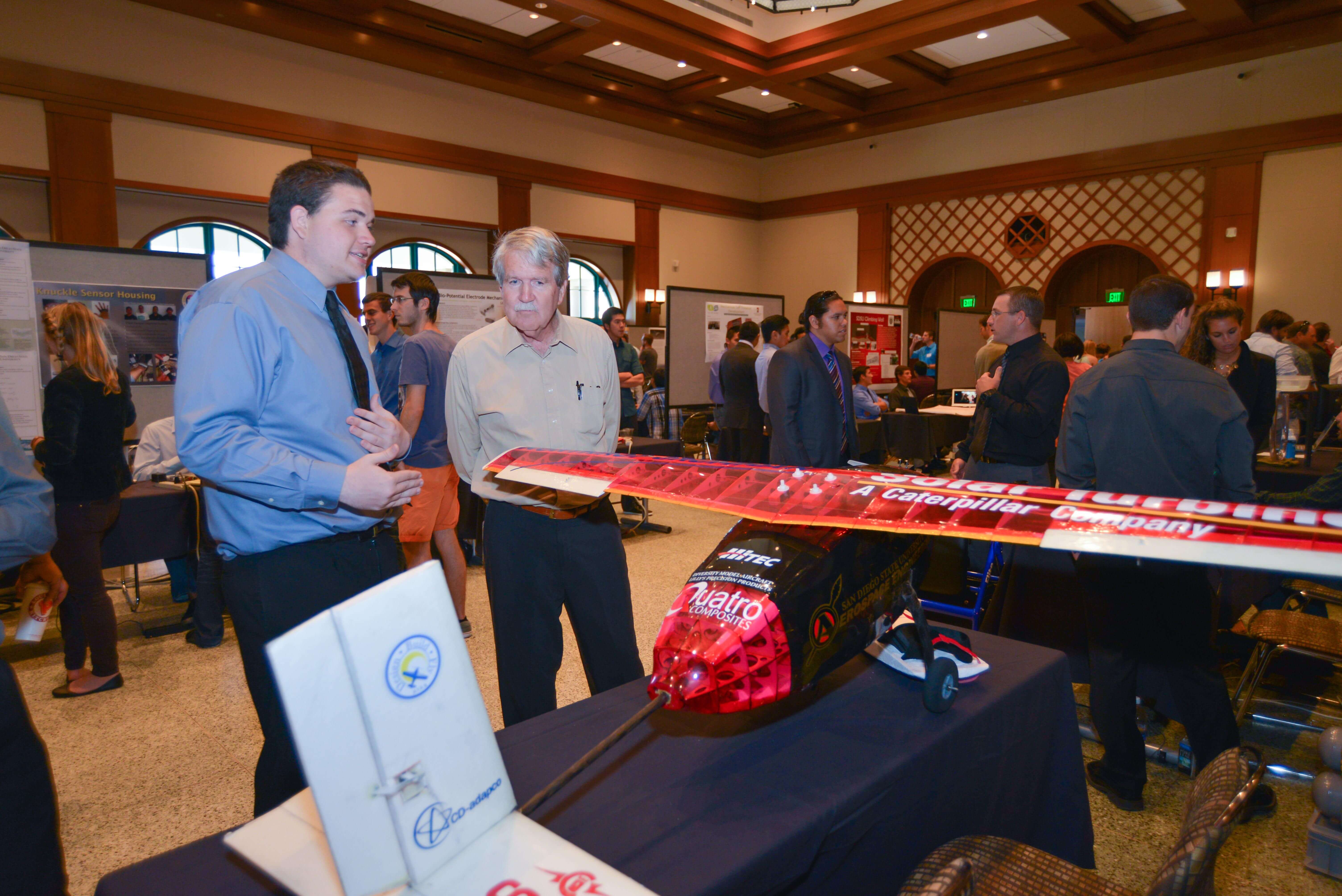
2014 Design Day visitors examine a student project.
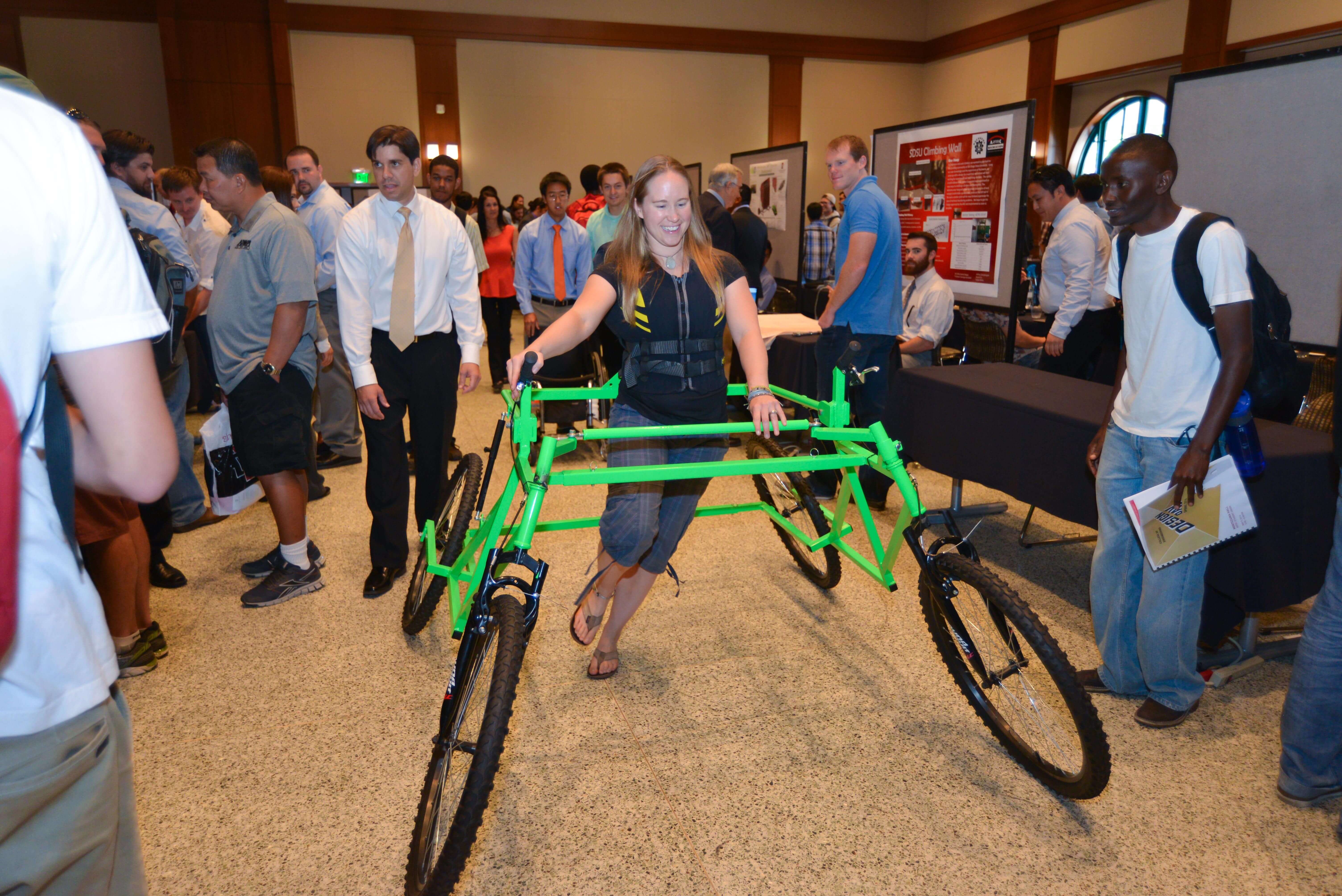
Assisted Running Mechanical Apparatus: This team built a basic running frame that is adaptive and responsive to Sarah Bettencourt, a former United States Marine with a rare undiagnosed neurological disorder. Her permanent losses are constant vertigo, as well as no sense of coordination, for example, up, down, left or right. Sarah’s number one request is to be able to run. The device gives her stabilization as well as support needed to achieve her primary desire.


